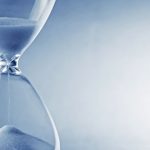For example, when I am writing one of these columns, I make sure to take a copious number of breaks and switch to doing other types of work frequently. These breaks are a form of structured procrastination so I can fragment a seemingly impossible task into smaller objectives that are more manageable. Using these two effects, I deliberately keep multiple tasks unfinished so I feel motivated to complete them.
Another way I’ve employed the Zeigarnik and Ovsiankina effects is to flip procrastination on its head. Instead of thinking of procrastinating as a way to avoid tasks, I think about how I can savor the joy of breaks. In fact, this whole approach has made me think a lot about my work-life balance. Instead of spending eight hours in the hospital and clinic per day, maybe I should instead think of it as spending eight hours suspending my home life in anticipation for going home and learning all the wonderful things my family members are doing.
Altogether, I’ve started to see procrastination as less of an unhealthy habit than as a vital gift. I procrastinate because I enjoy the present and I find satisfaction in what I am doing right now. When I feel the temptation to procrastinate, I remind myself that this desire comes not from my brain dreading the future but rather because it is in love with the present. By extension, this means that I get to choose what I want to procrastinate on. After all, if my brain tells me that I have to procrastinate to enjoy the present, I should do something truly enjoyable so I can make the most of that gift.
Self-Compassion as Anti-Procrastination
There’s something else that helps with procrastination: self-compassion.6 If perfectionism is a root cause of procrastination, then only self-compassion is the way to address this. You may find better clinicians and writers out there in the world, but you will never find another one better at being me than me. It may sound hokey, but self-compassion is the exercise of kindness so that we can move forward and no longer be trapped in the fear of completing a task.
Self-compassion is also important because it is a social contagion.7 We want to be around people who make us feel like we are in a kind, positive and mindful environment. When we exhibit self-compassion, we attract people in our lives who add to this energy. With such positive relationships, tasks become less heavy and the need to delay something that is dreaded or the fear of being judged becomes less. Procrastination simply becomes a moot point.


